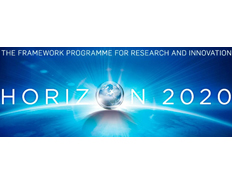Print

Warming Impacts on Estrogenic and Progestagenic Endocrine Disruptors Effects in Fish Liver - A Proof of Concept Study Using Single- and Novel Multi-Cell 3D Cultures of the European Native Brown Trout: SPHEROTOX
Details
Locations:Portugal
Start Date:Nov 1, 2021
End Date:Oct 31, 2022
Contract value: EUR 79,907
Sectors: Fisheries & Aquaculture, Research
Description
Programme: H2020-EU.4. - SPREADING EXCELLENCE AND WIDENING PARTICIPATION
Topic: WF-03-2020 - Widening Fellowships
Call for proposal: H2020-WF-03-2020
Funding Scheme: MSCA-IF-EF-ST - Standard EF
Grant agreement ID: 101038087
Project description
Impact of estrogenic and progestagenic endocrine disruptors on 3D trout cultures
Sex-steroid hormones act on aquatic organisms as endocrine-disrupting compounds (EDCs). This threat to aquatic ecosystems will be addressed by the EU-funded SPHEROTOX project, which will focus on in vitro testing of a complex of EDCs mixtures involving the EU watch listed pollutant ethinylestradiol and emergent progestins drugs. Researchers will develop and apply cutting-edge in vitro fish toxicity test tools involving single-cell and multi-cell type 3D spheroids of liver cells of brown trout (Salmo trutta). The team will explore the morphology and viability of 3D cultures using light and electron microscopy, including immunocytochemistry. In addition, researchers will study multi end-point biochemical assays in combination with Raman microspectroscopy and mechanistic insights of disruption and eventual biomarkers of fish exposure to progestins.
Objective
In recent years, an increasing number of emerging pollutants were identified in aquatic ecosystems, and one of the major concerns is the presence of sex-steroid hormones and mimics which act on aquatic organisms as endocrine-disrupting compounds (EDCs). The proposed multidisciplinary project will have focus on in vitro testing of complex of EDCs mixtures: the EU watch listed pollutant ethinylestradiol with emergent progestins drugs (levonorgestrel and megestrol acetate), taking into account a standard versus a warming scenario, as a major global change issue. This will be done by developing and exploiting cutting edge in vitro fish toxicity test tools: single-cell and (new in fish studies) multi-cell type 3D spheroids of liver cells (hepatocytes, stellate cells and biliary epithelial cells) of brown trout (Salmo trutta). The project will explore the advantages of 3D cultures, which have been proved to be much more biologically realistic than common 2D cultures, in order to study: (i) their morphology and viability using light and electron microscopy, including immunocytochemistry; (ii) multi end-point biochemical assays in combination with Raman microspectroscopy (novel in 3D culture); (iii) mechanistic insights of disruption and eventual (still unavailable) biomarkers of fish exposure/effect as to progestins. Quantitative gene expression is the method of choice for this task, targeting specific genes related to lipid-metabolism, yolk and eggshell proteins and androgen/estrogen/progestin receptors. An additional innovative contribution of this project is developing new tolls for enforcing the 3Rs (Replacement, Reduction, and Refinement) in fish research. The project will bring to another level the collaboration between the applicant and the host mentor by bidirectional transfer of skills and expertise, while conducting a scientifically innovative project. The strategy will benefit persons while establishing grounds for long-term institutional benefits.

